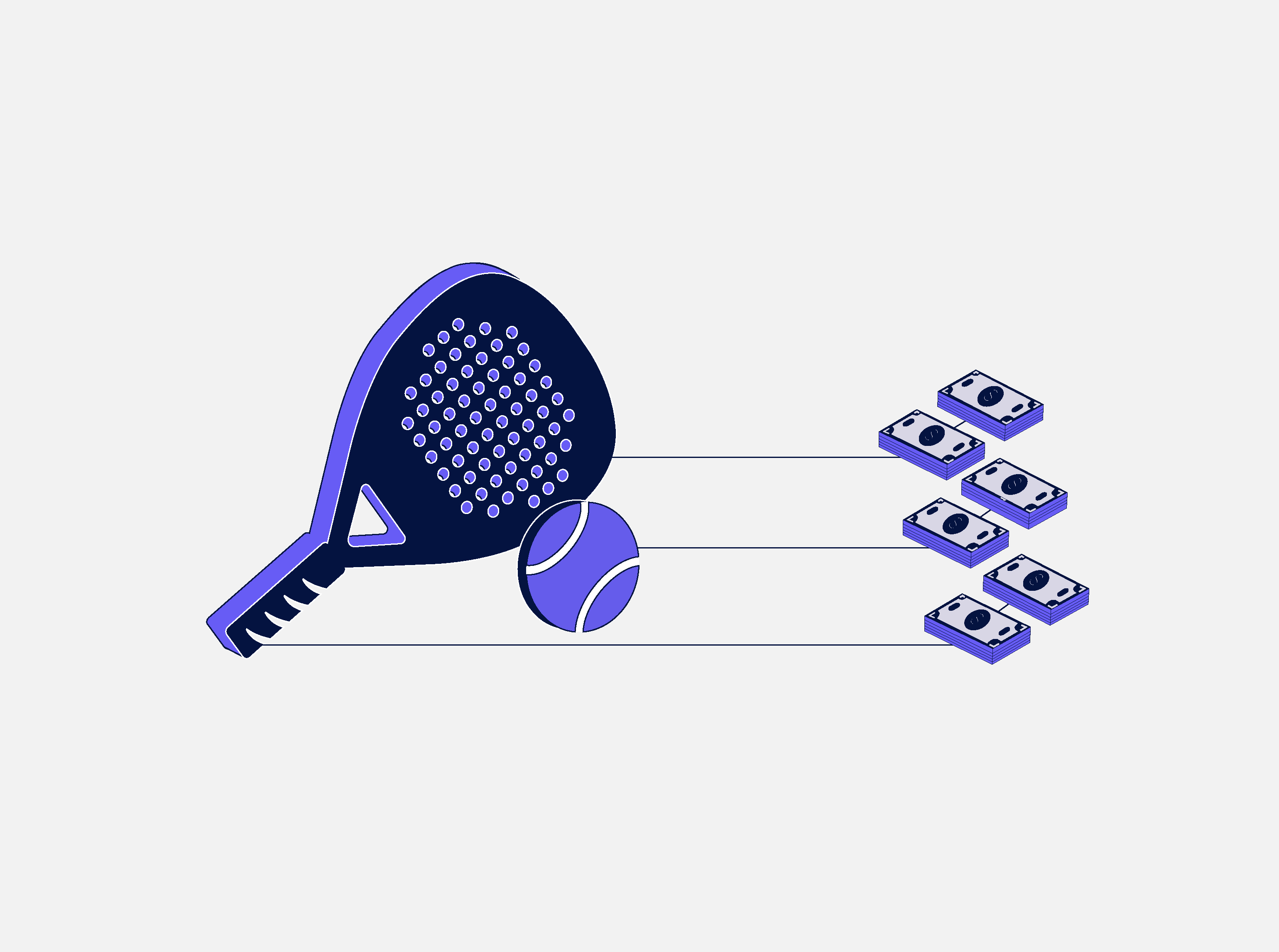Walk past a tennis club in Miami, a rooftop gym in Los Angeles, or a park in Austin, and you might spot something different: a compact court, glass walls, and players using short-handled rackets. That’s padel. Over the last few years, this hybrid of tennis and squash has quietly made its way into cities across the U.S., and its presence is growing fast.
Globally, the padel club market was valued at $1.93 billion in 2023 and currently boasts over 25 million players. By 2032, that figure is projected to reach $5.76 billion, with an annual growth rate of nearly 13 percent.
U.S. Growth Is Still Early, but Accelerating
In 2020, there were fewer than 30 padel courts in the United States. By early 2024, that number had grown to 454 and is expected to grow to a staggering 30,000 in 2030. The expansion is promising, especially for a sport still in its early stages domestically. Compared to other countries, though, the U.S. remains in catch-up mode. Spain has 5.5 million players. Italy, Argentina, and Mexico all have more than a million each.

Search interest tells a similar story. Global Google queries for padel have climbed 385 percent over the past five years. Within the U.S., traffic peaked in both June 2024 and January 2025, clear signs that attention is building.
The Draw Is Simple and Social
Padel is easy to learn. It’s played in doubles on a small court, with a lower barrier to entry than sports like tennis. The ball can bounce off the walls, and the rallies last longer than many newcomers expect. Strategy and placement matter more than power, making it approachable even for casual players.
Its structure also makes it ideal for cities. Courts don’t require much space, games are naturally social, and players can rotate in and out without needing a full afternoon. Whether at a club, hotel, or local gym, it fits neatly into busy schedules.
A Familiar Cast of Supporters
As padel gains ground, some of the sport’s visibility is coming from high-profile names. Serena Williams, Rafael Nadal, Andy Murray, and Andre Agassi have all expressed interest in the game. Outside of tennis, celebrities like David Beckham, Lionel Messi, Cristiano Ronaldo, and Eva Longoria have also picked it up, some even backing clubs and teams financially.
These endorsements add to the appeal but also signal confidence in where the sport is headed.
Business Is Catching Up
The commercial side of padel is evolving quickly. Startups are developing booking tools. Apparel brands are designing for padel-specific performance. Hospitality groups are adding courts to new developments. Between the infrastructure and the growing player base, there’s a clear path for growth.
In 2022, there were 40,000 courts worldwide. A compound annual growth rate of 26 percent is expected through 2025. Around 37.5 percent of global players are women, and that number continues to rise as the sport broadens its reach.
Why Stryde Is Watching the Space
At Stryde, we track shifts in sport and culture that point to lasting opportunity. Padel is expanding its footprint in the U.S. with support from players, brands, and investors. The fundamentals are lining up: participation, infrastructure, and visibility. And the sport is now finding a foothold in markets far beyond its origins.
We’re always keeping a close eye on what comes next.





